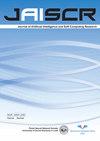一种利用无监督卷积神经网络自动检测心律失常的新方法
IF 2.4
3区 计算机科学
Q2 COMPUTER SCIENCE, ARTIFICIAL INTELLIGENCE
Journal of Artificial Intelligence and Soft Computing Research
Pub Date : 2023-06-01
DOI:10.2478/jaiscr-2023-0014
引用次数: 0
摘要
摘要近年来,人们提出了各种基于卷积神经网络(CNN)的模型来解决心律失常检测问题,并达到了饱和精度。然而,这些模型往往被视为“黑盒”,缺乏可解释性,这阻碍了心脏病专家的理解,并最终阻碍了智能终端的临床使用。同时,这些方法大多是监督学习,需要标签数据。获取标签数据是一个耗时且昂贵的过程。此外,在人类视觉皮层中,横向连接的重要性与前馈连接相同。到目前为止,基于横向连接的CNN还没有得到研究。因此,在本文中,我们将细胞神经网络、横向连接和自动编码器(AE)相结合,提出了用于心律失常检测的横向连接卷积自动编码器神经网络(LCAN)的构建块,该网络以无监督的方式学习表示。具体地,LCAN包括卷积层、横向连接层、AE层和池化层。LCAN通过横向连接层来检测显著的波特征。AE层和竞争学习用于更新卷积网络的滤波器——这是一个无监督的过程,确保每个卷积层中所有相邻滤波器的权重分布相似,并实现神经元在LCAN中的语义排列。为了评估所提出的模型的性能,我们在著名的MIT–BIH心律失常数据库上进行了实验。所提出的模型产生的总精度和kappa系数分别为98%和0.95。实验结果表明,LCAN不仅有效,而且是心律失常检测的一种有用工具。本文章由计算机程序翻译,如有差异,请以英文原文为准。
A Novel Method for Automatic Detection of Arrhythmias Using the Unsupervised Convolutional Neural Network
Abstract In recent years, various models based on convolutional neural networks (CNN) have been proposed to solve the cardiac arrhythmia detection problem and achieved saturated accuracy. However, these models are often viewed as “blackbox” and lack of interpretability, which hinders the understanding of cardiologists, and ultimately hinders the clinical use of intelligent terminals. At the same time, most of these approaches are supervised learning and require label data. It is a time-consuming and expensive process to obtain label data. Furthermore, in human visual cortex, the importance of lateral connection is same as feed-forward connection. Until now, CNN based on lateral connection have not been studied thus far. Consequently, in this paper, we combines CNNs, lateral connection and autoencoder (AE) to propose the building blocks of lateral connection convolutional autoencoder neural networks (LCAN) for cardiac arrhythmia detection, which learn representations in an unsupervised manner. Concretely, the LCAN contains a convolution layer, a lateral connection layer, an AE layer, and a pooling layer. The LCAN detects salient wave features through the lateral connection layer. The AE layer and competitive learning is used to update the filters of the convolution network—an unsupervised process that ensures similar weight distribution for all adjacent filters in each convolution layer and realizes the neurons’ semantic arrangement in the LCAN. To evaluate the performances of the proposed model, we have implemented the experiments on the well-known MIT–BIH Arrhythmia Database. The proposed model yields total accuracies and kappa coefficients of 98% and 0.95, respectively. The experiment results show that the LCAN is not only effective, but also a useful tool for arrhythmia detection.
求助全文
通过发布文献求助,成功后即可免费获取论文全文。
去求助
来源期刊

Journal of Artificial Intelligence and Soft Computing Research
COMPUTER SCIENCE, ARTIFICIAL INTELLIGENCE-
CiteScore
7.00
自引率
25.00%
发文量
10
审稿时长
24 weeks
期刊介绍:
Journal of Artificial Intelligence and Soft Computing Research (available also at Sciendo (De Gruyter)) is a dynamically developing international journal focused on the latest scientific results and methods constituting traditional artificial intelligence methods and soft computing techniques. Our goal is to bring together scientists representing both approaches and various research communities.
 求助内容:
求助内容: 应助结果提醒方式:
应助结果提醒方式:


